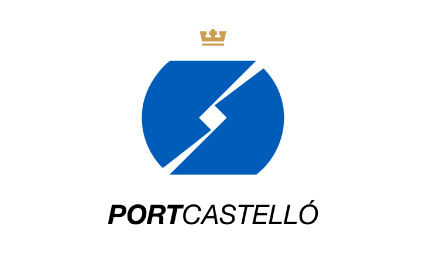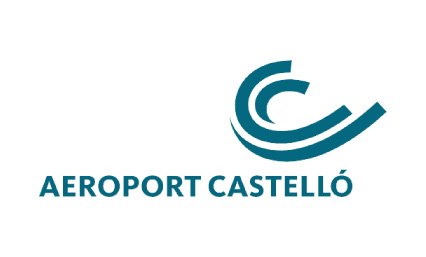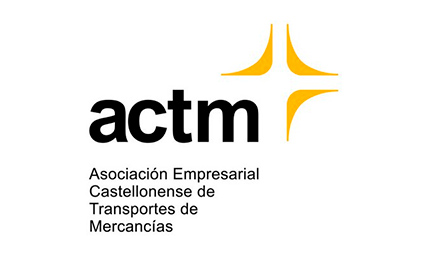Transport
Versatility at the service of competitiveness
The transformation undergone by the provincial economy in recent decades has been reflected in a particularly significant way in the evolution of the transport sector, whether by road, sea or air. The needs of Castellón’s economic sectors have served to promote the development of infrastructure such as the airport, strengthen the role of the Port of Castellón, and improve the road network, which is necessary due to the intensification of industrial vehicle traffic.
As far as road transport is concerned, the dual carriageway access to the port, the N-340 road bypass on the northern coast of the province, and the new route of the N-232 road, which bypasses the Querol pass in Morella, have meant progress for the sector’s development in a province with a fleet of 462,000 vehicles, of which 37,140 are lorries and 34,929 are vans—almost 8,000 more than at the beginning of the century. These figures are just a symptom of the potential of the province’s transport sector, which has ostensibly upgraded its quality standards and competes internationally with optimal and customised import and export solutions.
Staggered growth of industrial and commercial activities
This sector, which, in essence, has been reinforced by the impact of the pandemic, also offers comprehensive logistics proposals in terms of freight forwarding and consignment companies, as a multimodal approach in line with the demands of clients.
462,868 vehicles
For a population of 615,000 inhabitants. 751 vehicles per 1,000 inhabitants
37,140 lorries
34,929 vans
PortCastelló, sustained growth
In terms of the maritime sector, PortCastelló is definitely facing one of the most promising stages in its centenary history. The Port contributed decisively to the progress of Castellón in the first few decades of the 20th century. Now, in the 21st century, it has become at once a witness and accomplice to the evolution of the provincial economy, with the Ceramics Wharf and the South Dock as the keystones of its progression. In the absence of an optimal rail connection, for which the intermodal station to the south of the port and next to the Serrallo industrial estate is already planned, PortCastelló has proven itself to be able to become a fully competitive ally at the service of companies from Castellón, and this is thanks to its unstoppable progress in recent years.Although limited by its size, it has an unequivocal and sustained ambition over time, which is also reflected in initiatives such as the railway connection between the southern dock and the northern quays.
Exponential growth of goods
In recent years, PortCastelló has maintained a sustained growth rate that is higher than that of the Spanish port system in terms of freight traffic:
Ranked 11th in tonnes handled
Ranked 4th in solid bulk products in Spain
Ranked 7th in liquid bulk products in Spain
Port of the ceramics cluster
27% of the port’s traffic
Increase in grains and wind power
(Project Cargo) due to its diversification policy
South Dock expansion project
420,000 m2 available in the South Dock (Port with the largest available surface area in the entire Mediterranean area)
Development of new spaces
logistiCS project
PortCastelló’s strategic guidelines
The outlook for the immediate future is set out in the 2020-2024 Strategic Plan, in which the Port outlines its initiatives based on five strategic lines:
Blue growth
Based on innovation and respect for the environment and focused on people
Diversified development
Generating wealth in the surrounding area and extending the area of influence
Social impact
Improving coexistence with the capital city and the province as a whole
Competitiveness
Key axis for clients and users, in search of a balance among efficiency, effectiveness, price and sustainability
Advanced management
Supports the rest of the strategic lines by promoting speed and digitalisation
The airport, a thriving reality
Ten years after the Castellón-Costa Azahar airport entered into service in 2014, the qualitative leap that its operation has meant for communications to and from the province of Castellón is evident. In 2023, the infrastructure has achieved its best results ever with 283,259 passengers and 9,780 aircraft movements.
In a highly competitive scenario, this infrastructure is consolidating its position on the Spanish airport map, in constant negotiation with different airlines to attract new connections.
Currently, the airport connects Castellón all year round with Bucharest, Brussels, Düsseldorf, London, and Madrid, and in summer also with Berlin, Bilbao, Milan, Oporto, and Asturias. In 2025, Budapest, Krakow, and Palma de Mallorca will be added, and in 2026, Paris and Stuttgart will join the list.
Moreover, also related to the airport, the first steps have been taken towards a business hub promoted by the public company Aerocas, with the development of the so-called Complementary Activities Zone (ZAC), and the location of companies related to aeronautics and logistics.
- Brok-air: Engaged in aircraft maintenance, repair, and overhaul (MRO) activities.
- eCube: Dedicated to aircraft dismantling, long-term parking, and aircraft reactivation activities.
- Arkadia Space: Development and validation of engines and chemical propulsion systems based on the use of green fuels.
- COMET Ingeniería: Design, production, and certification of aerospace components.
As if this were not enough, the airport is becoming an increasingly important infrastructure asset for the economic revitalisation of the Castellón region, along with an educational aspect: in the 2024/2025 academic year, 177 students are studying different Vocational Training courses at the airport. One of the cycles is intermediate level (Assembly of structures and installations of aeronautical systems) and three are higher level (Aeromechanical maintenance of turbine-powered aircraft; Aeromechanical maintenance of turbine-powered helicopters, and Maintenance of aircraft electronic and avionic systems).


